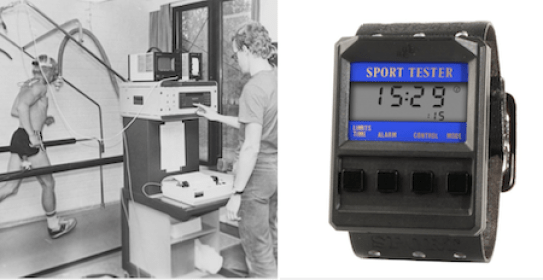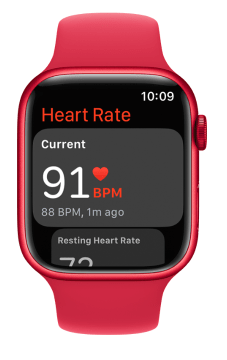
A mechanical pulsometer watch? Be still my beating heart! An expression usually indicating excitement upon finding a mate or a low-mileage Honda NSX that hasn’t been modified by Fast and Furious folk. Obviously, you don’t want your heart to be still, ’cause that would mean you’re dead, or about to be dead. But do you want a mechanical watch with a pulsometer?
A pulsometer watch has a scale around the edge of the dial marked with a descending scale of numbers indicating beats per minute (BPM). You start the chronograph and simultaneously begin counting for 30 (or 15) pulsations, at which point you stop the chronograph and read the bezel for the BPM. The pulsations bezel is a tachymètre bezel and is used in the same fashion as the more common sets except it has a defined unit, and therefore, time base.

Just so you know, Dr. John Floyer invented the mechanical pulsometer watch in 1707. Well, not the watch itself. Markings on a watch’s bezel to measure his patients’ heartbeat. It was a huge hit amongst the medical fraternity for 200 years. His fondness for cold bathing not so much (until recently).
And then Finnish inventor Seppo Säynäjäkangas (pronunciation unknown) released unto the world the Polar Sport Tester PE 2000 – a device using a wireless EKG sensor to measure the wearer’s heart rate, transmitted to a digital display on the wrist unit. Anyone remember the Polar chest bands?

These days you can buy any manner of digital watches with a built-in EKG heart monitor, many of which will alert you when you’re having a heart attack. Or, you know, achieving your fitness goals. No fuss, no muss. No stopping and starting your chrono and peering at tiny little numbers grouped together.
No big price tag, either. So no, you don’t need an mechanical pulsometer watch, especially if you want to quickly and accurately measure your heartbeat whilst on the move.

But mechanical watches are no longer about anything much, other than telling the time, being a patron of engineering excellence, showing off to fellow collectors and not driving yourself batshit crazy with an all-singing, all-dancing digital watch (Leghorn: How A Fossil Gen 6 Smartwatch Ruined My Life).
So why not a mechanical pulsometer watch? It’s a lot more useful than a mechanical watch with a speed-measuring tachymeter on the bezel, which you will never use. That’s not saying much, but there it is.

It all comes down to your taste for medical nostalgia and, more importantly, aesthetics.
Do you like the look of those numbers crowded together at the top of the dial? They’re not as intrusive as the pocket watch’s Montgomery dial, but the smaller the watch, the more tightly-packed and less legible the mechanical pulsometer watch.
Just to confuse things, more than a few pulsometer watches sports multiple bezel markings. The Longines Heritage below doubles-up with an asthmometer, for measuring breaths (respirations) per minute.

That aside, a properly-designed, minimalist 39mm watch will git ‘er done – assuming you don’t wear bifocals or cheaters. Personally, I’d like a mechanical pulsometer watch with the word “mort” at the 9 o’ clock, but not many people share my macabre sense of humor.
I suppose resale is the only practical consideration. I can find no data indicating the pulsometer’s value relative to the more “sporty” tachymeter bezel, but Rolex Daytona, if you know what I mean.
Private buyers who see the markings on your mechanical pulsometer watch for sale and say “what’s that for?” are either gonna say “cool” or be cool to the design. You can always refer them here.
No, you start the chronograph and simultaneously begin counting for 30 (or 15) pulsations at which point you stop the chronograph and read the bezel for the BPM. The pulsations bezel is a tachymètre bezel and is used in the same fashion as the more common sets except it has a defined unit, and therefore, time base.
D’oh! Text amended.